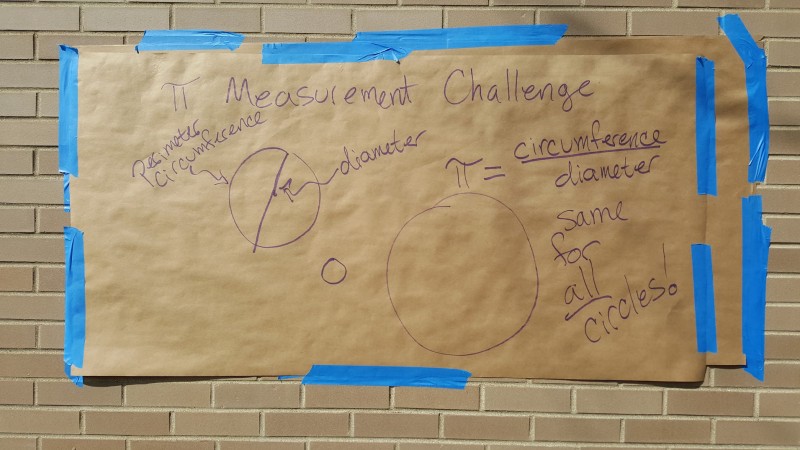
Ohio State University mathematician Niles Johnson got in touch on Friday to tell us that our π Approximation Challenge last year had inspired him to hatch an audacious plan to measure a really big π.
The word ‘geometry’ is derived from the Greek for ‘measurement of land’, and Dr. Johnson took that quite literally: he wanted to measure the Great Circle Earthworks in Heath, Ohio; a part of the Newark Earthworks (not their original name) built over 2,000 years ago.
So, this Saturday, Niles gathered together around 30 responsible children and some adults for them to look after, and split them into four groups – two measuring the circumference of the earthworks, and two measuring the diameter.
Here’s how they got on:
Interestingly, the Ohio History Connection website says that the Great Circle Earthworks are “nearly 1,200 feet in diameter”, which is either quite an exaggeration or a measurement of something else.
With measurements of 1071½ feet for the diameter and 3372½ feet for the circumference, the group obtained a value for the circle constant of 3.14746, which is within 0.2% of the real constant!
Interestingly, Niles says that the nearby Wright Square (also not its original name) has an area within 2% of another circular earthwork in the vicinity. So maybe someone thought that the key to squaring the circle was to just try a really big circle.
I’m very impressed by the accuracy of their measurements, but also jealous of the fact everyone’s standing about in t-shirts. Warm weather and unavoidably present π – maybe Ohio is a mathematician’s paradise!
Read more about the event at OSU’s 2016 π measurement challenge page.
Just a note: twice when you wrote “radius”, you meant to write “circumference”. Thanks!
Whoops, so I did! I’ve fixed it.